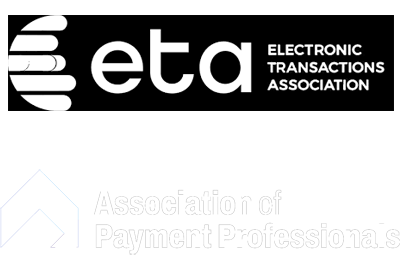18 Jan

Managing healthcare payments is a complex and time-consuming process that often leads to inefficiencies and frustrations for both healthcare providers and patients. However, with the advent of technological advancements and changing healthcare landscape, there is an increasing need to streamline these payments for improved efficiency. In this article, we will explore the current healthcare payment system, the challenges it presents, the benefits of streamlining healthcare payments, the technological innovations in this field, and the steps towards implementing streamlined payment systems. We will also discuss the future of healthcare payments and the role of policy in shaping these systems.
Understanding the Current Healthcare Payment System
The current healthcare payment system involves various stakeholders, such as insurance companies, healthcare providers, and patients. Insurance plays a crucial role in healthcare payments, with most healthcare services being covered by insurance plans. However, this system often leads to complex billing processes and delays in reimbursement for healthcare providers.
The Role of Insurance in Healthcare Payments
Insurance acts as a financial safety net for patients who receive healthcare services. It helps individuals cover the costs of medical expenses, ensuring that they have access to necessary healthcare. Insurance companies negotiate payment rates with healthcare providers, determining the amount they will reimburse for specific services.
Challenges in the Existing Payment Process
Despite the vital role of insurance, the existing payment system poses several challenges. Healthcare providers often face administrative burdens, including extensive paperwork and complex coding requirements. These tasks divert valuable time and resources away from patient care. Moreover, the reimbursement process can be slow, resulting in delayed payments for providers.
The Need for Streamlining Healthcare Payments
The need to streamline healthcare payments is evident, given the challenges posed by the current payment system. By reducing administrative burdens and enhancing the patient experience, streamlined payment systems can bring numerous benefits to healthcare providers, insurance companies, and patients.
One of the key reasons for streamlining healthcare payments is to reduce the administrative burdens faced by healthcare providers. The current payment system often involves a significant amount of paperwork and complex coding requirements. This can be time-consuming and detract from the primary focus of healthcare providers, which is patient care. By implementing streamlined payment systems, unnecessary paperwork can be eliminated, and coding requirements can be simplified. This allows healthcare providers to spend more time on what they do best – providing quality care to their patients.
Furthermore, streamlined payment systems can also automate processes such as billing and claims submission. This automation not only saves time but also resources for healthcare providers. With automated systems in place, providers can submit claims and receive reimbursement faster, reducing the financial strain on their practices. This, in turn, allows providers to allocate more resources towards improving patient care and investing in advanced medical technologies.
Reducing Administrative Burdens
Streamlined payment systems eliminate unnecessary paperwork and simplifies coding requirements, allowing healthcare providers to focus more on patient care. By automating processes, such as billing and claims submission, providers can save time and resources and achieve faster reimbursement.
In addition to reducing administrative burdens, streamlined payment systems also have a significant impact on the overall patient experience. The complex billing processes and out-of-pocket expenses associated with the current payment system can often leave patients confused and frustrated. However, with streamlined payment systems in place, patients can better understand their medical costs and insurance coverage. Clear and transparent payment processes create trust and satisfaction among patients, contributing to positive healthcare experiences.
Moreover, streamlined payment systems can also provide patients with more flexibility and convenience. With online payment options and simplified billing statements, patients can easily manage their healthcare expenses. This not only improves the overall patient experience but also enhances patient engagement and empowerment in their own healthcare journey.
Enhancing Patient Experience
Streamlined payment systems also improve the overall patient experience. By minimizing complex billing processes and reducing out-of-pocket expenses, patients can better understand their medical costs and insurance coverage. Clear and transparent payment processes create trust and satisfaction among patients, contributing to positive healthcare experiences.
In conclusion, the need for streamlining healthcare payments is crucial in today’s healthcare landscape. By reducing administrative burdens and enhancing the patient experience, streamlined payment systems can bring numerous benefits to healthcare providers, insurance companies, and patients alike. With improved efficiency and transparency, the healthcare industry can continue to evolve and provide high-quality care to patients while ensuring financial stability and sustainability for all stakeholders involved.
Technological Innovations in Healthcare Payments
Rapid advancements in technology have revolutionized healthcare payments, introducing new methods and opportunities to streamline the process.
As the healthcare industry continues to evolve, so does the way we handle payments. Technological innovations have played a significant role in transforming the way healthcare payments are made, making it more convenient, secure, and efficient for both patients and providers.
The Rise of Digital Payments
Digital payment platforms, such as online portals and mobile applications, have gained popularity in healthcare transactions. These platforms offer convenience, security, and real-time transaction monitoring. Patients can easily review their bills, make payments, and track their insurance claims, reducing the need for manual interventions.
With the rise of digital payments, patients no longer have to worry about carrying cash or writing checks to pay for their medical expenses. They can simply log into their online portal or use a mobile app to make payments from the comfort of their own homes. This not only saves time but also reduces the risk of lost or stolen payment information.
Furthermore, digital payment platforms provide patients with a clear and detailed breakdown of their bills, allowing them to better understand the charges and make informed decisions about their healthcare expenses. They can easily view their payment history, track their deductibles, and even set up automatic payments to ensure timely and hassle-free transactions.
Implementing Streamlined Payment Systems
Implementing streamlined payment systems requires a shift in processes and collaboration among stakeholders. However, the benefits it brings make this transition worthwhile.
Steps towards Transition
The first step towards implementing streamlined payment systems is adopting technology-enabled solutions that automate billing, claims submission, and reimbursement processes. Healthcare providers and insurance companies should invest in robust systems that integrate seamlessly and comply with industry standards. Collaboration and communication between stakeholders are crucial to ensure smooth transitions and minimize disruptions during the changeover. Using a platform like PayBlox is a great first step. They will match you to payment processors who fit your healthcare business’s needs.
Overcoming Potential Obstacles
While transitioning to streamlined payment systems, healthcare organizations may face challenges such as resistance to change and interoperability issues. Education and training programs can help mitigate these obstacles by ensuring that healthcare providers and staff understand the benefits of the new systems and how to use them effectively.
The Future of Healthcare Payments
The future of healthcare payments lies in embracing technological advancements and adapting payment systems to meet evolving needs.
Predicted Trends and Developments
Experts predict that healthcare payments will continue to shift towards digital platforms, with increased use of mobile apps and virtual wallets. Artificial intelligence and machine learning algorithms will play critical roles in automating payment processes and detecting fraudulent activities. Additionally, there will be a focus on interoperability and data sharing to improve claim processing and reduce payment errors.
The Role of Policy in Shaping Payment Systems
Government policies and regulations have a significant influence on healthcare payment systems. Legislation and guidelines can promote interoperability, data privacy, and standardization, ensuring that streamlined payment systems are implemented effectively and securely. Policymakers must collaborate with industry stakeholders to create an environment that fosters innovation and supports the adoption of efficient payment systems.
Conclusion
Streamlining healthcare payments is essential for improving efficiency and reducing administrative burdens in the healthcare industry. By understanding the current payment system, recognizing the need for change, leveraging technological innovations, and implementing streamlined payment systems, healthcare providers, insurance companies, and patients can all benefit from a more efficient and transparent payment process. Furthermore, using a provider like www.PayBlox.com will streamline your payments ecosystem. The future of healthcare payments holds exciting possibilities, and with the right policies and collaborations, we can create an improved healthcare payment system that prioritizes quality care and patient satisfaction.






